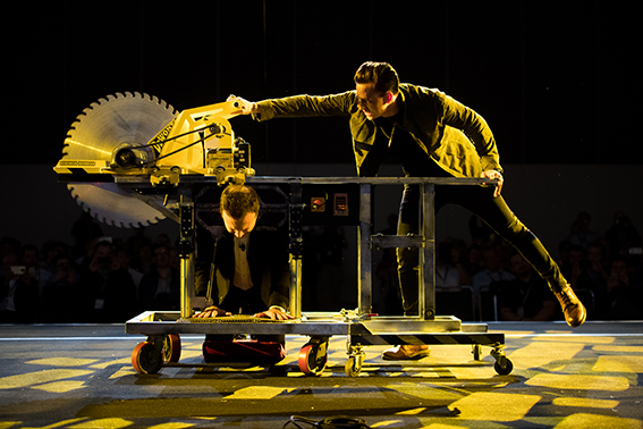
SolidWorks CEO, Gian Paolo Bassi put his neck on the block. Literally.
SolidWorks World is a place where 5,000 of the keenest users of the biggest selling 3D design system on the planet gather to network, to learn and to find out the direction that the parent company, Dassault Systèmes, is heading.
Over the last few years, the event has become something of a benchmark by which to gauge the direction that Dassault is taking with its mainstream product offering.
Since the company’s decision to unveil its future plans, which look to move away from the core SolidWorks product platform, the most engaged members of the community have been quite vocal in both their mistrust of the company and their concerns over the future of their tool of choice.
After all, if you tell a group of engineers that the system they’ve invested – what could be nearly two decades of learning and experience into – is eventually going to be replaced with something else, you’re going to get a reaction. And not always a good one.
That, at least, is a common reading of the situation. The reality is that SolidWorks is now 20 years old, and while it’s not the oldest of 3D design and engineering software on the planet, it has been around long enough that something new would eventually come along.
Given Dassault’s split development streams, between SolidWorks on the one hand, and Catia et al on the other, something would eventually change.
Another reality is that SolidWorks has a huge user community and Dassault has committed to two decades of the software it in the current guise — while at the same time, being quite frank about where things are heading.
So it was with some intrigue that I jetted out to LA for my first visit to SolidWorks World in three years. Here’s what I learned.
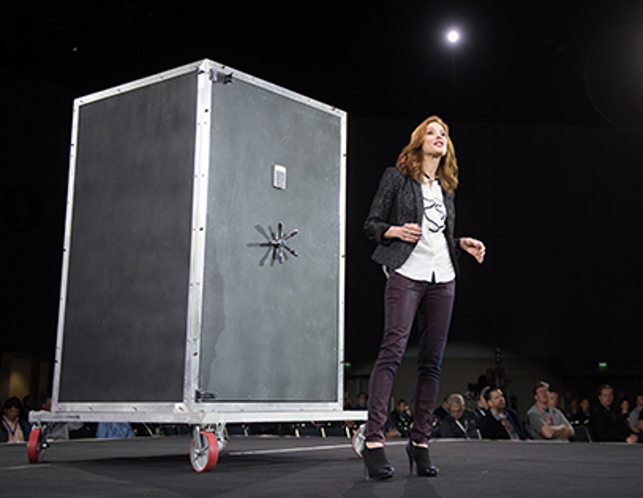
The first day opened with Illusion Projects talking about its work for the likes of David Copperfield
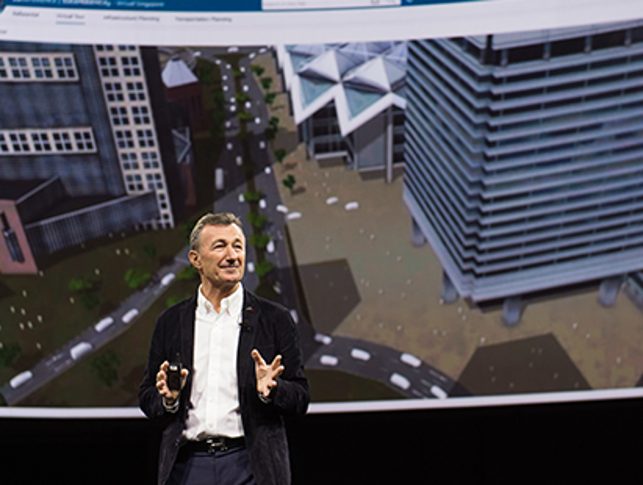
Dassault’s CEO and Chairman, Bernard Charles, talked about the Experience Economy
#1 A need for more user focus, not shareholder appeasement
General sessions at these events are always interesting. They show what the user community is currently doing as much as what the executives are thinking.
At the LA event we had magicians (featuring SolidWorks CEO, Gian Paolo Bassi, putting his head on the block, literally) that work with David Copperfield (a fan of eDrawings, by all accounts); robots; heartwarming stories on the work the company is doing to help kids into engineering and design, as well as the all important sneak peak at what’s coming in SolidWorks 2018.
This is why people come to the event: to learn what’s coming down the pipe next from the software they use each day. What didn’t fit were the out-of-kilter presentations from parent company Dassault Systèmes, where executives lent heavily on promoting the 3DExperience platform. Sat amongst the audience, it was clear that the attendees at the event had little interest in the Experience economy or whether Catia was used on a Hyperloop project.
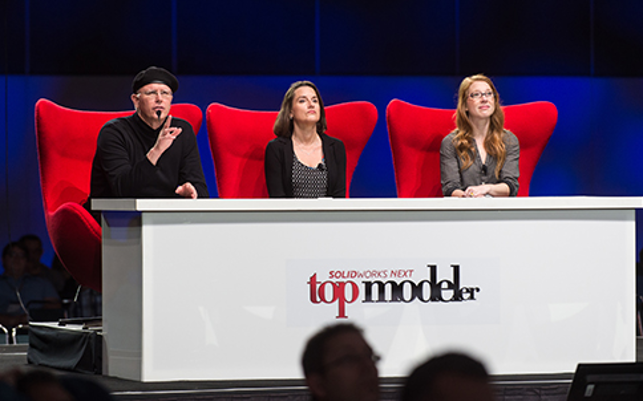
The last day saw the forthcoming features of SolidWorks 2018 unveiled in the usual comedic manner
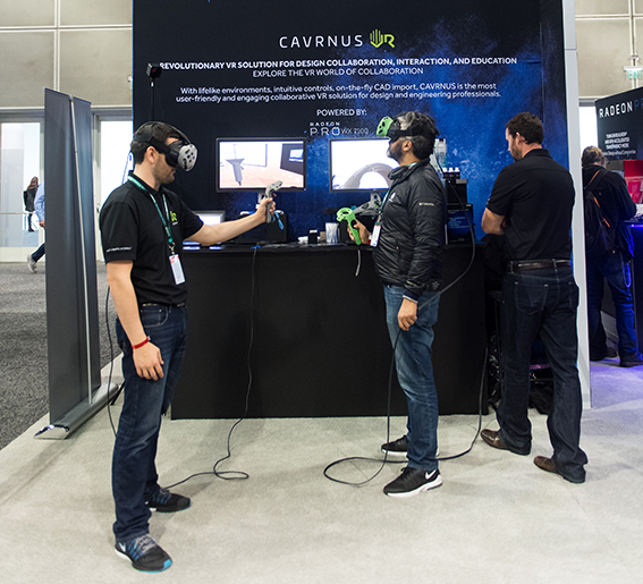
VR was a hot topic in the partner pavilion
#2 Next generation tools?
One of the big questions on many SolidWorks users’ list is where the company is heading next.
For the last few years, the company’s strategy has been about as clear as mud, with a variety of new tools previewed, beta tested and talked about – without seeing much daylight outside of a closed set of beta customers.
Both Mechanical Conceptual and Industrial Designer, then last year, the company discussed it’s X Design initiative – all three of which are hybrid cloud applications, built on Dassault’s 3DExperience platform.
Now, it seems (and while this wasn’t discussed on stage) the company has acquired another set of tech, from a Cambridge based startup, CADStack. Details were scant and there wass no clear indication about direction, but something else is brewing.
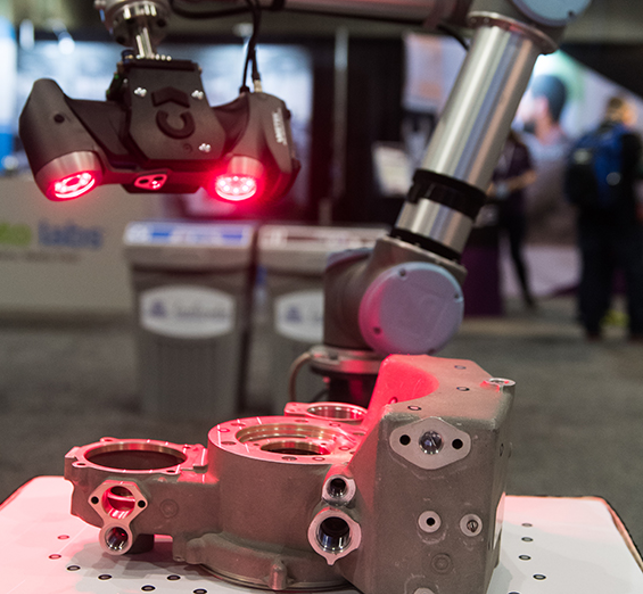
More robots than you can shake a stick at, even with a laser scanner strapped to them
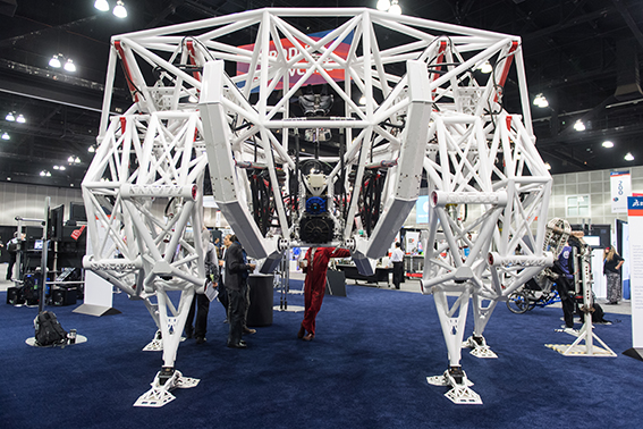
Probably the biggest exhibit in the customer showcase — mech warrior a-go-go
#3 SolidWorks Simulation Engineer
It’s clear that Dassault is looking to transfer some of the wealth of technology available elsewhere in it’s portfolio to the SolidWorks product range.
A new example of this is the forthcoming introduction of SolidWorks Simulation Engineer. While SolidWorks Simulation has been progressively becoming more advanced in it’s capabilities, it looks like this is starting to top out somewhat.
To solve this, starting later this year Dassault is trialling a new product in the vein of Mechanical Conceptual and Industrial Designer, which brings some of the Simulia/Abaqus technology to the fore.
The intent is for this to handle the solving of some of those ultra complex non-linear simulation studies, based on Abaqus, which has been built for that purpose from the ground up.
Connections to SolidWorks are claimed to be pretty seamless, although there looks to be some form of translation/conversion happening, rather than it being an integrated tool.
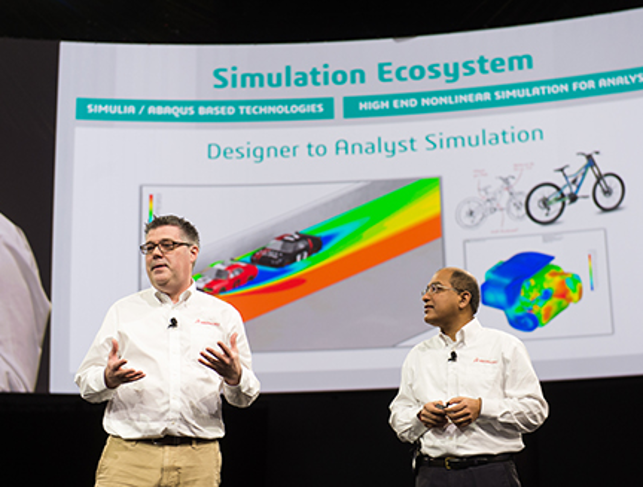
Day three saw a new product announced for advanced simulation, Simulation Engineer

If nothing else, SolidWorks World has always been about networking
#4 The products are still getting love
One of the highlights of the event is the sneak peak at what 2018 holds. This allows users to plan around what’s coming next and while it’s a good while off yet, there’s plenty to get excited about coming in SolidWorks 2018.
Large assemblies look to be getting a boost, with much more dynamic use of lightweight representations, allowing sub-assemblies to be switched light/heavy at will and the ability to mate lightweight representations as well.
Elsewhere, there’s been work done on sheet metal, making the creation of tab/slot combinations more intelligent and more automated.
There’s also some new add-ons coming. One is SolidWorks CAM, based on the CAMworks add-on from Geometric. There’s also new integration for IoT projects, with Xively, complimenting the work around electronics and PCB design in the last few years.
Finally, topology optimisation is coming to SolidWorks. Built on the Tosca solver (part of the Simulia product stack), this looks interesting, particularly for those looking to strip weight out of their products (and who isn’t?) or perhaps take advantage of Additive Manufacturing.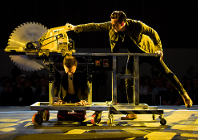
Four things we learned at SolidWorks World
Default






